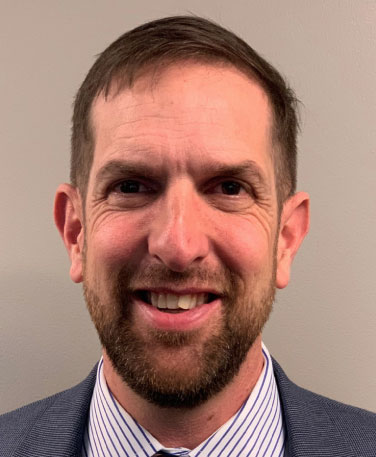Teaching What it Takes to Lead
Joel Sensenig uses experience from more than two decades in the U.S. Navy to teach students in Northwestern Engineering’s Master of Science in Executive Management for Design and Construction (EMDC) program about Leadership and Organizations.

Sensenig, who works as assistant director of public works in Lake County, Illinois, helps executives understand how to determine their own strengths and weaknesses, best practices for developing a leadership strategy, and how to manage a crisis. Along the way, he combats the misconception that leaders always have to be right — or the smartest person in the room.
"Building a team that is empowered and smarter than you can make for long-term wins in an organization," he said. "Humility and a strong will are good leadership traits."
Sensenig, who co-teaches the course with Eric Odderstol, provides students with a mixture of group and individual activities to mimic the realities of life as a leader. He also has students study real-world examples of leadership through case studies, such as a comparison of the leadership responses to Hurricane Katrina and Hurricane Sandy. In each case, leaders found that there were both positive and negative lessons to be learned. An important point that Sensenig highlights is to recognize the impact a leader's decision can and will have — sometimes even when the leader isn't fully involved.
"You can delegate authority but you can’t delegate responsibility," he said. "If you are the leader, you’ll have to take responsibility for the results, even if you delegated the task to someone else."
Much of the content in the Leadership and Organizations course is focused on preparation and strategy. Sensenig said that some of knowing what to do in a crisis situation comes from experience, but much of it is due to having an action plan in place – and that comes back to empowering others to lead.
"Executive level leadership requires adapting your skills," he said. "What got you the job may not keep you in the job or take your organization further."
While much of leadership requires problem-solving and long range planning, Sensenig also stresses the importance of celebrating successes. An inspiring and intelligent leader can be a major catalyst for others. He also emphasizes the value of being seen rather than being secluded in an office — or bunker, as the case may be.
"You're leading people, so lead by walking around," he said. "You will get the undistorted truth and show that you care.”
You also will learn from those with whom you are working, as Sensenig has discovered during his five years teaching EMDC. He's enjoyed interacting with the students in each of his classes, and he finds it rewarding when former students reach out to express their own gratitude.
"When one of them calls to thank me for what they learned and is excited about how it directly applied to one of their leadership challenges, or in helping them get that next promotion, it's definitely rewarding," he said.
Such phone calls tell Sensenig that the lessons he shared clearly resonated and they fuel his excitement to continue sharing those teachings in the future.
“Investing in courses that enhance your capability to lead people and complex organizations will serve you well as our world becomes ever more integrated and complex,” Sensenig said. “The set of courses in the EMDC program will provide you with a strong basis for continued personal growth and have a positive impact in any organization you are challenged to lead.”

